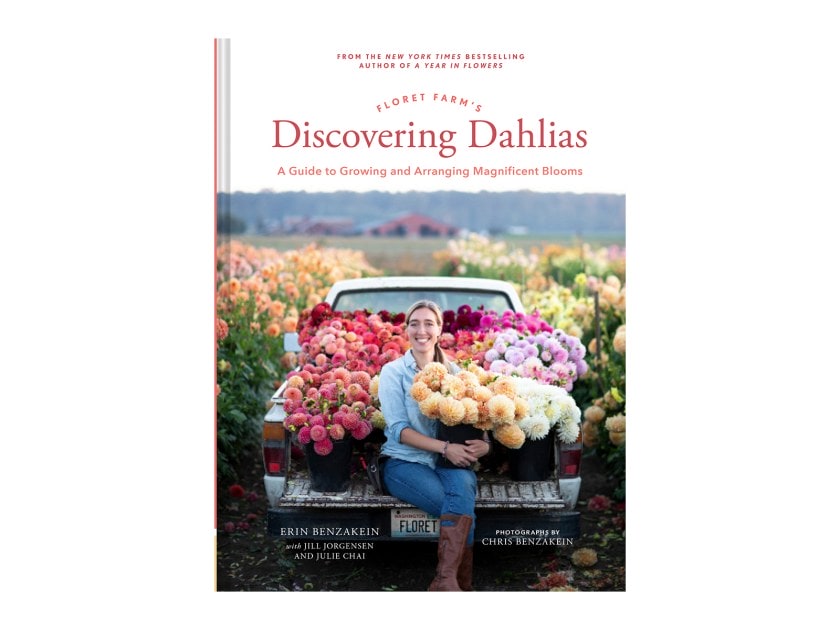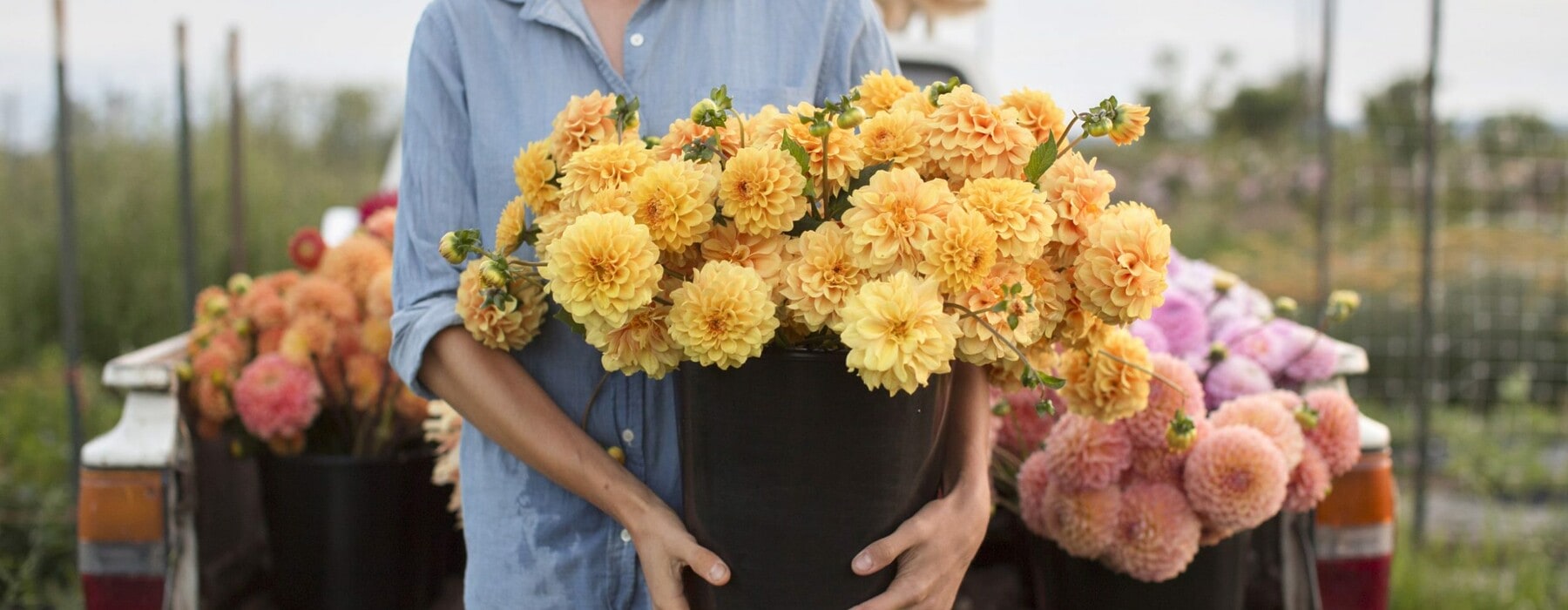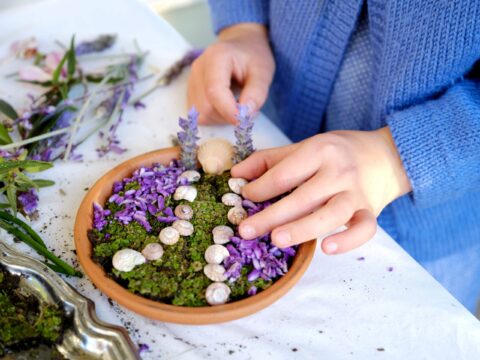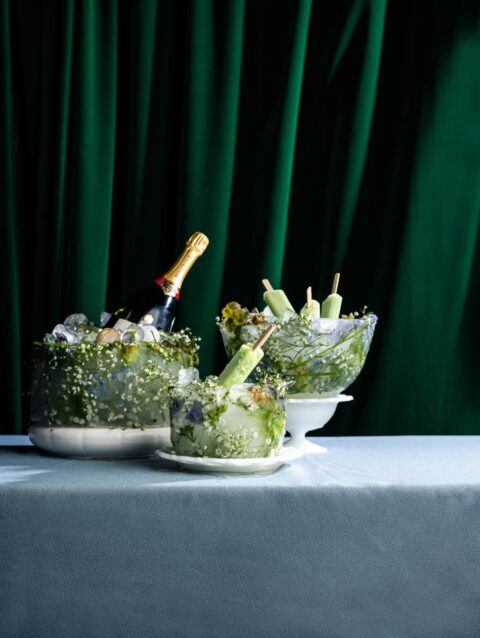Acclaimed flower farmer and florist Erin Benzakein demystifies these beauties in all their fabulous forms.
Of all the flowers I’ve ever grown, dahlias are my favourite. These treasures are one of the most well-loved and widely grown flowers for cutting because they come in a rainbow of colours, they produce an abundance of flowers from midsummer into autumn, and the range of shapes and sizes available is staggering.
In addition to being such a well-loved cut flower, their incredible ability to multiply over the course of a growing season is unmatched – you can start with a single tuber or rooted cutting, and by season’s end be digging a full clump that contains three to 10 babies from the original plant. Similar to a sourdough starter, once you have it and as long as you take care of it, you’ll have a steady supply to share with others and plant for yourself, every season.
Along with their range of sizes and shades, dahlias come in a dazzling array of forms. Some are perfectly symmetrical, with tightly spaced petals, while others have a loose, lush look. They may have different petal styles and lengths, with open centres or not. When it comes to choosing varieties, people’s preferences vary widely – some prefer cactus types, while others will grow only informal decoratives. I’m personally drawn to the oddballs, including anemone, stellar, incurved cactus, and orchette. Over time you might find yourself gravitating to particular classes, and understanding the differences between them will help you when selecting new varieties.
Dahlia-pedia
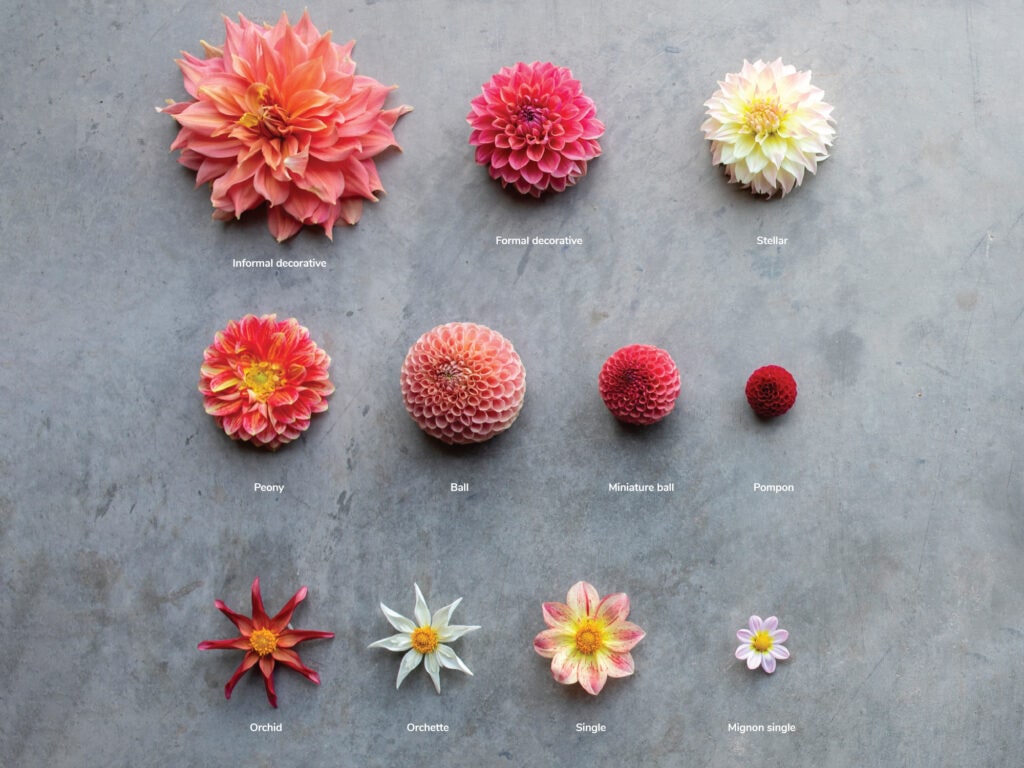
Informal decorative
Informal decoratives have a soft, romantic quality to the blooms, and their petals are typically lush and billowy. This class includes many of the most beautiful and useful varieties for making arrangements.
Formal decorative
Though there are fewer overall varieties of this kind, formal decoratives are among my favourites to use for designing. The large, showy blooms have a more uniform and refined quality than some other types, and they are a stunning addition to large arrangements.
Stellar
This class is filled with striking, textural blooms. Their sharply edged petals are reflexed back toward the stem, resembling colourful shooting stars.
Peony
This class has few varieties. Flowers have a ring of at least two, but not more than five, rows of petals around the outside edge encircling a single, open centre.
Ball
These medium-sized blooms are the longest-lasting and most weather- resistant, making the varieties in this class especially popular among people growing dahlias for market.
Miniature ball
Similar to ball varieties, these include a wide range of smaller, rounded blooms that are very long lasting and weather resistant. If you’re looking for hardworking varieties, these fit the bill.
Pompon
These are some of the cutest varieties imaginable. The petite ball-shaped flowers are the size of large shooter marbles, ideal for adding interest and texture to bouquets. Floral designers can’t get enough of them.
Orchid
Fast becoming a favourite among designers, this class is filled with long-stemmed, star-like flowers with petals that roll inward. Pollinators love these beauties, they’re an eye-catching addition to the garden and they’re perfect for bouquets.
Orchette
This class is similar to orchid types but has flowers that boast a fluffy collar of inner petals, giving the star-shaped blooms a more delicate, romantic appearance. I love incorporating them into bouquets because they add a fun, textural quality.
Single
This class is one of my favourites because the daisy-like flowers are a cheerful addition to arrangements. While petal shapes vary widely from rounded to pointed, they all have a striking single centre.
Mignon single
With miniature single blooms that have rounded petal tips, these petite flowers have a diameter under 5cm.
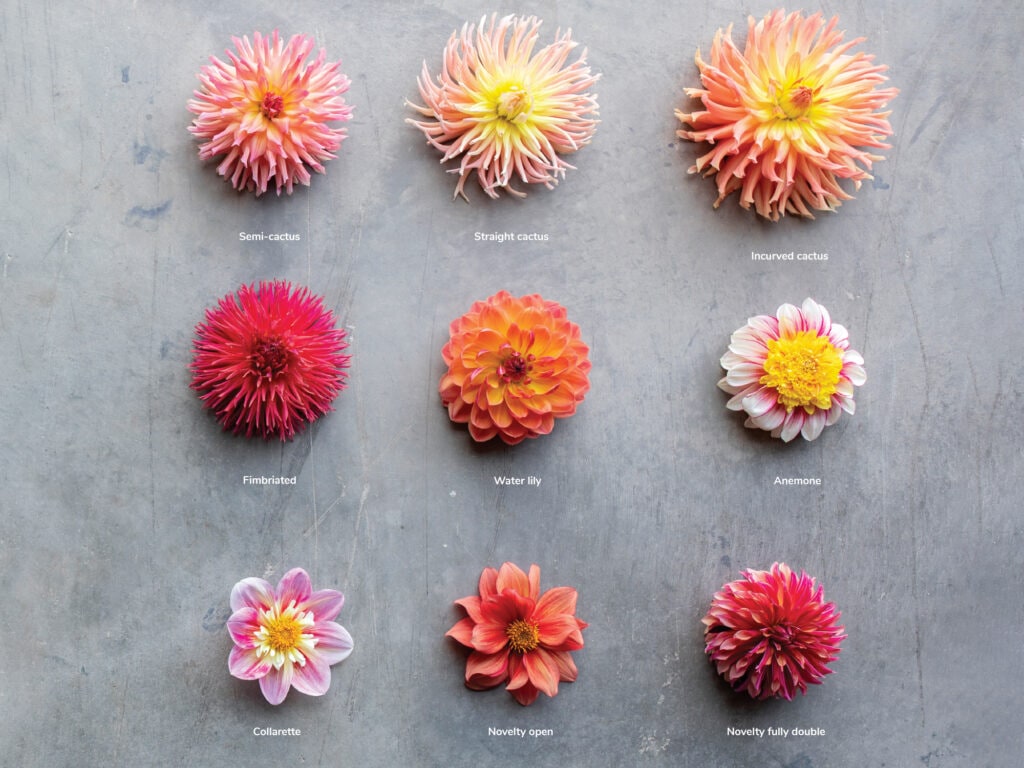
Semi-cactus
Another popular class with breeders, semi-cactus types come in loads of choices in many colours. They are similar in shape to straight cactus varieties, but with petals that are less defined and tubular and much more relaxed. These blooms typically have long stems and are good for floral arrangements.
Straight cactus
Brimming with spiky, textural varieties, this class is popular because they are so striking in the garden. I’ve found these porcupine-like blooms to be quite fragile when it comes to weather damage, and their tips tend to show heat stress very easily.
Incurved cactus
Of all the cactus types, this class is by far my favourite. Their flowers remind me of Muppet characters with their twisted, tubular, feather-like petals. They are a fun addition to the garden and are always a topic of conversation with visitors.
Fimbriated
This class is filled with shaggy, fluffy blooms with outer petals that look as if they’ve been snipped with pinking shears. Flowers are more prone to weather damage, since they are on the delicate side, but if given a little extra protection, they are wonderful textural additions to the garden and the vase.
Water lily
One of the classes most loved by flower arrangers, water lily types have flowers borne on long, strong stems and typically hold their heads upright. Aptly named, the tidy saucer-shaped blooms resemble floating water lilies.
Anemone
This class includes fun novelty varieties that most people would never guess are dahlias because of their unique appearance. Flowers have a ring of reflexed petals that surround a domed pincushion-shaped centre, similar to double-flowered echinacea.
Collarette
Darling single blooms that have a collar of ruffled petals encircling glowing single centres make varieties in this class lovely as bouquet additions.
Novelty open
This class is somewhat of a catch-all for rare varieties that don’t clearly fit into other classes. What makes these unique is that the flowers’ single centres are proportionate to the ring of outer petals.
Novelty fully double
This class is another grab bag of varieties that don’t easily fall into other defined classes. Their common trait is a closed, tight centre and petals that are proportionate in size.
